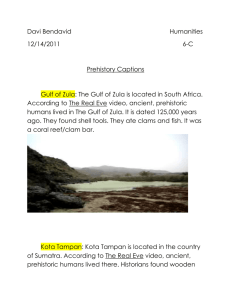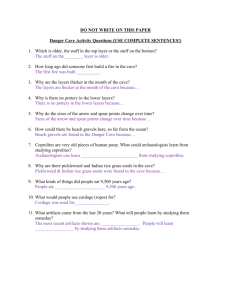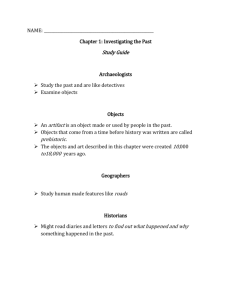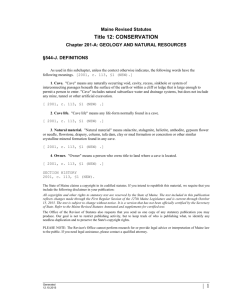MAMMOTH CAVE
advertisement
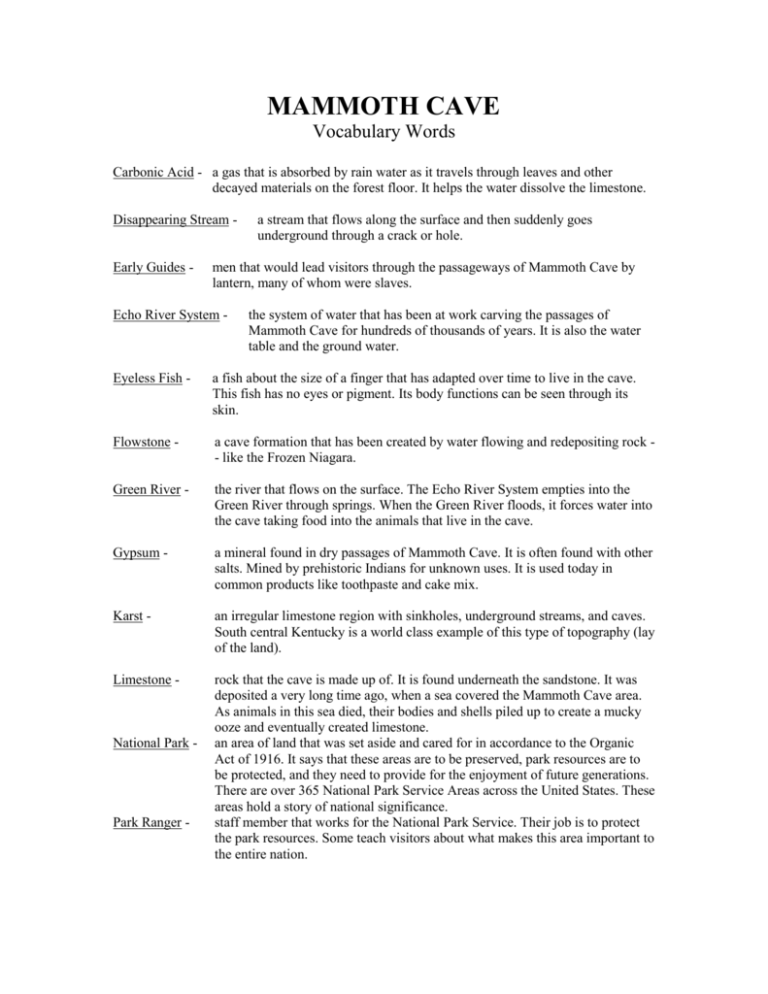
MAMMOTH CAVE Vocabulary Words Carbonic Acid - a gas that is absorbed by rain water as it travels through leaves and other decayed materials on the forest floor. It helps the water dissolve the limestone. Disappearing Stream - Early Guides - a stream that flows along the surface and then suddenly goes underground through a crack or hole. men that would lead visitors through the passageways of Mammoth Cave by lantern, many of whom were slaves. Echo River System - the system of water that has been at work carving the passages of Mammoth Cave for hundreds of thousands of years. It is also the water table and the ground water. Eyeless Fish - a fish about the size of a finger that has adapted over time to live in the cave. This fish has no eyes or pigment. Its body functions can be seen through its skin. Flowstone - a cave formation that has been created by water flowing and redepositing rock - like the Frozen Niagara. Green River - the river that flows on the surface. The Echo River System empties into the Green River through springs. When the Green River floods, it forces water into the cave taking food into the animals that live in the cave. Gypsum - a mineral found in dry passages of Mammoth Cave. It is often found with other salts. Mined by prehistoric Indians for unknown uses. It is used today in common products like toothpaste and cake mix. Karst - an irregular limestone region with sinkholes, underground streams, and caves. South central Kentucky is a world class example of this type of topography (lay of the land). Limestone - rock that the cave is made up of. It is found underneath the sandstone. It was deposited a very long time ago, when a sea covered the Mammoth Cave area. As animals in this sea died, their bodies and shells piled up to create a mucky ooze and eventually created limestone. an area of land that was set aside and cared for in accordance to the Organic Act of 1916. It says that these areas are to be preserved, park resources are to be protected, and they need to provide for the enjoyment of future generations. There are over 365 National Park Service Areas across the United States. These areas hold a story of national significance. staff member that works for the National Park Service. Their job is to protect the park resources. Some teach visitors about what makes this area important to the entire nation. National Park - Park Ranger - Prehistoric Indians - early woodland Indians that lived in the Mammoth Cave area. Some of them ventured into Mammoth Cave and explored over 10 miles underground by torch light. Safe Caving - cavers have a rule of 3's. Always go caving with at least 3 people, always have at least 3 sources of light, and rule 3 -- always make sure that someone on the surface knows where you are going and what time you plan to be out Saltpeter - a nitrate found in the river sediment in Mammoth Cave and other area caves, that was mined by leeching and is an important ingredient in making gun powder. Sandstone - rock that is found closest to the surface. It was deposited here a very long time ago, when the Mammoth Cave area was actually a delta to a river system to the north. It is a sedimentary rock made of sand and silt. Sedimentary Rock - a type of rock that is formed from small particles that over time and with pressure compact to form rock usually found in layers. Sinkhole - a dent or bowl shaped depression on the surface of the earth that drains water from the surface to an underground water system. Spelunker - someone who spends time caving for either recreation or research. Spring - a location where groundwater emerges onto the surface. Stalactite - a cave-formation that builds down from the ceiling, or hangs "tite" to the ceiling. Stalagmite - a cave formation that builds up from the floor, or "mite" reach the ceiling some day. Stephen Bishop - a famous early slave guide of Mammoth Cave. He discovered over 20 miles of cave. He was known throughout the world. When visitors came from Europe they would request him by name. He was the first to discover the eyelet fish. Travertine - a word meaning "traveling rock." It is a mineral consisting of layered calcium carbonate. It is used as a general term for cave formations, like stalactites, stalagmites, and flowstone. Troglobites - animals that spend their entire life in the cave. Like the eyeless fish, cave shrimp, cave crayfish, and cave beetles. Trogloxene - animals that use the cave as a refuge, but must go out of the cave to feed, like bats and crickets.




